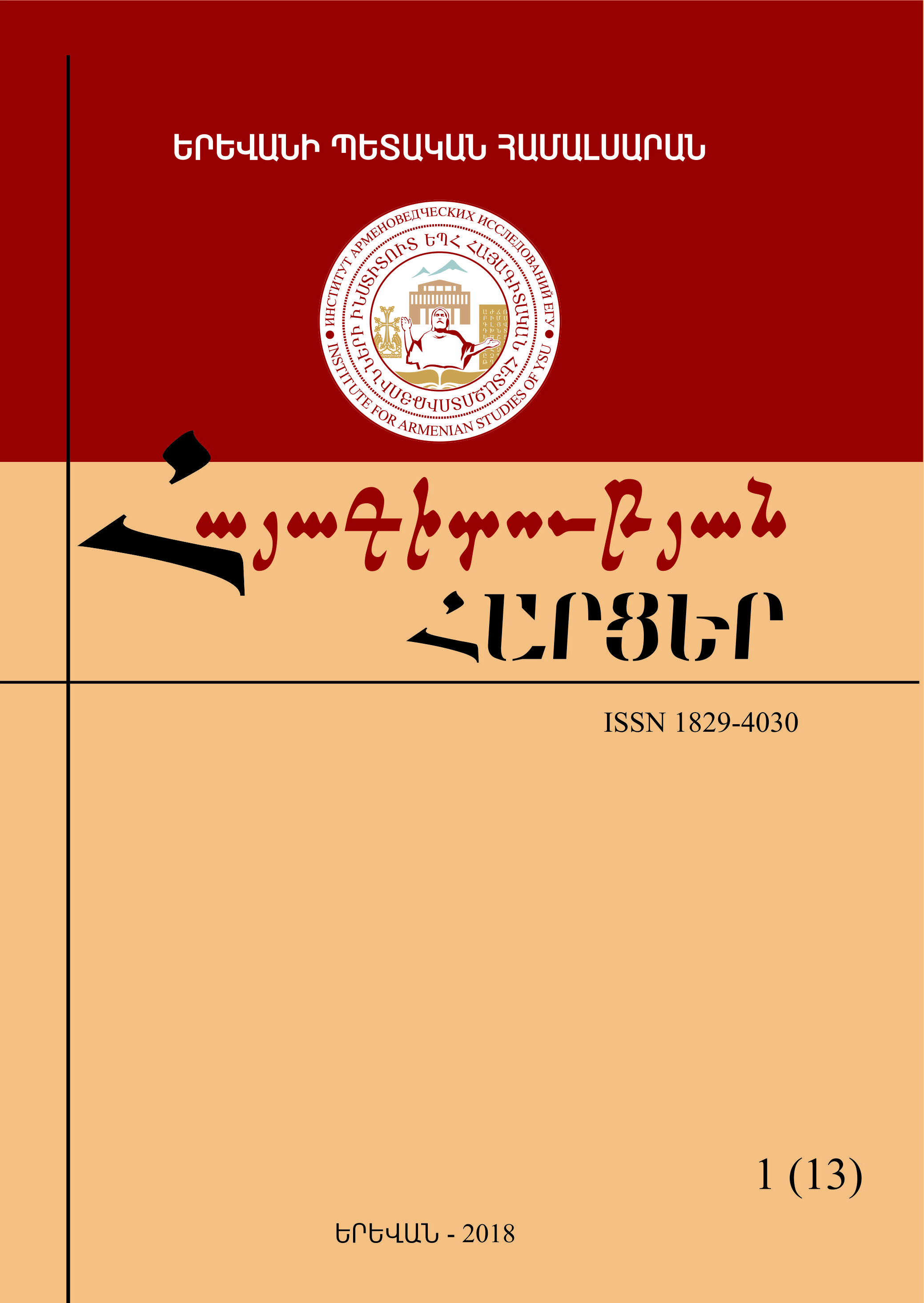Հին հայերենի ր (r), ռ (Ṙ) նայականների և մ (m), ն (n) ռնգայինների ծագումը և հնչաբանական արժեքայնությունը
Аннотация
The sound correspondences between native Armenian words (of Indo-European origin), as well as those of related and non-related languages reveal that 1) Old Armenian liquids ր (r) and ռ (ṙ) stem from the Indo-European *r by splitting the latter into two phonemes, and the nasal consonants մ (m) and ն (n) come from the Indo-European *m and *n respectively; 2) the splitting of the Indo-European *r took place in the later period of early ancient or at the beginning of the late ancient period. Before the splitting they were in a sub-phonemic relationship. 3) The early Armenian borrowings (Hittite Luwian and Akkadian) suggest that before the 10th century B.C. the phonemization of sonorants ր (r) and ռ (ṙ) had already been completed; 4) Indo-European syllabic sonorants *r̥, *l̥, *m̥ , *n̥ turned into vowel + sonorant combinations, hence, did not have any significant role from the perspective of Old Armenian phonemic system.

